The SmartRunner Matcher uses the laser light section technology to capture height profiles and compares them with a taught reference profile. With up to 32 profiles stored in the sensor, it is perfect for positioning as well as presence and completeness checks of guided components.
The laser profile sensors are based on the unique SmartRunner technology. For the first time, this combines the proven laser light section technology with a 2-D vision sensor including LEDs and offers maximum performance in a compact sensor housing.
SmartRunner Matcher: The Specialist for Profile Matching
The SmartRunner Matcher combines application-specific profile detection with an integrated evaluation in a compact housing. The control unit of the laser profile sensor is optimized to detect deviations from a previously taught-in height profile.
First, a reference profile is taught in via an intuitive operating wizard. In addition, the permitted position and component deviations are defined. Based on this, the sensor verifies the detected profile of the object and its correct position via profile matching. Moreover, variants are available with further functions such as the use and storage of up to 32 profiles on one sensor and the output of the object position deviation. These offer different detection ranges of up to 700 mm distance as well as 300 mm X detection range.
The SmartRunner Matcher can be commissioned easily and intuitively: via the Vision Configurator—the uniform user interface for all vision sensors from Pepperl+Fuchs—via Data Matrix control code or via guided operation and parameterization with the software wizard.
Typical Applications
- Detection of small parts like screws, clamps, and studs
- Completeness check for battery cells, pens, pills, etc.
- Position check and output for boxes, pallets, and other objects
How It Works
This is how the detection of object contour, position and distance works with the Matcher:

Since not every object is the same, a suitable object tolerance must be defined. This is done by defining an envelope curve around a taught-in profile (1). Depending on this, quality values are automatically determined, from which quality threshold values can then be derived to distinguish between good and bad parts. Users can freely define how high the detection sensitivity of the sensor should be (2). Furthermore, displacement tolerances often result from trigger tolerances. With the Matcher, these can also be set in 0.1 mm steps in the X and Z directions so that they do not influence the measurement result (3). The SmartRunner then reliably detects deviating profiles as “Bad” (4).
Highlights
- Rugged and cost-effective presence, completeness, and position detection of components
- Precise profile matching, even with different surface structures, ambient light, and varying operating distances
- Independently adjustable object and offset tolerances and separate data output
The following specific application examples show the many possible uses of the SmartRunner Matcher:
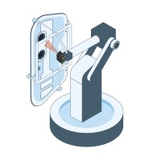
In the automotive industry, car bodies are welded using prefabricated sheets. If a sheet is incomplete or faulty, the fault must be detected and the incorrect sheet removed from production. The SmartRunner Matcher uses light section technology to detect objects using profile comparison and to confirm that components are complete …
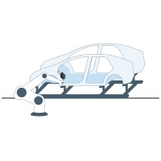
In vehicle frame assembly, components are connected to each other using fasteners such as bolts, screws, and clips. The SmartRunner Matcher detects whether these parts are present and in the right location, and sends a signal to the control system if a fastener is missing …
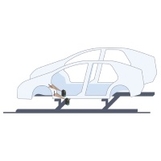
Silicone vibration dampers or "stickies" are glued to different parts of a vehicle frame to reduce noise during vehicle operation. To ensure that the dampers are in the right position, the SmartRunner Matcher is taught the height profile of each "sticky" and the current height profile is compared to a reference profile …
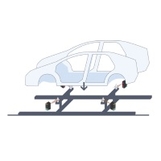
In automobile production, the car body being processed is transported to various processing stations on skids. Skid bolts anchor the body to the skid and are pushed into the holes provided in the body. To ensure that this process is safe, the SmartRunner verifies the positions of the skid bolts beforehand.
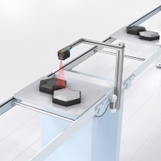
Robotic systems and handling systems are often used to feed workpieces or raw materials into production and processing systems. Before a robot picks up the feed elements, the presence of the workpiece carrier (presence monitoring) and the position of the material (position monitoring) must be checked. The SmartRunner Matcher performs both detection tasks in a single step.
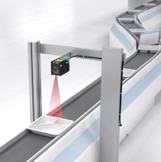
Plastic trays divided into several small compartments are often used when producing ready-made meals in the food industry. To ensure that the meal components are added to the right compartments, the alignment of the monochromatic, white trays must be checked. The SmartRunner Matcher delivers clear detection results even under these difficult ambient conditions.







 +49 621 776-0
+49 621 776-0